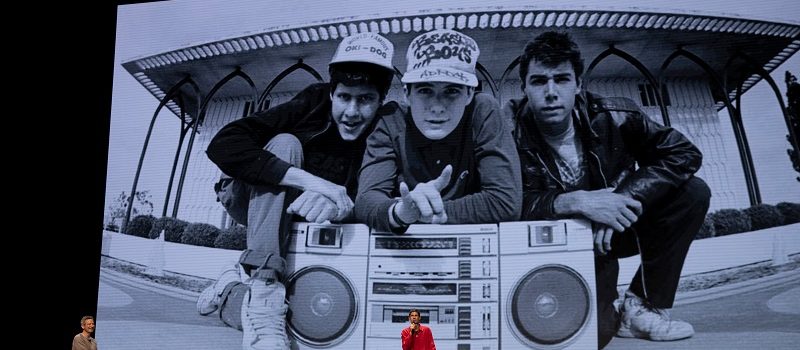The Beastie Boys had an enormous influence over my life, full disclosure. From the moment License to Ill was released, I inhaled it and even formed a band with my best friend at the time, called Troubled Youth who performed Beastie songs, as well as Beastie-like versions of classics such as We Got the Beat by the Go-Go’s. We carried ourselves like the Beasties. We drank like the Beasties. But then something extraordinary happened. They changed. We changed. Amazingly, their path musically, sonically and socially mirrored mine. When 1989’s Paul Boutique came out, I thought it was hip hop’s Sgt. Pepper’s. Turns out, me and my friends were few of the folks who felt that way, compared to the largest debut album of all-time that was License to Ill.
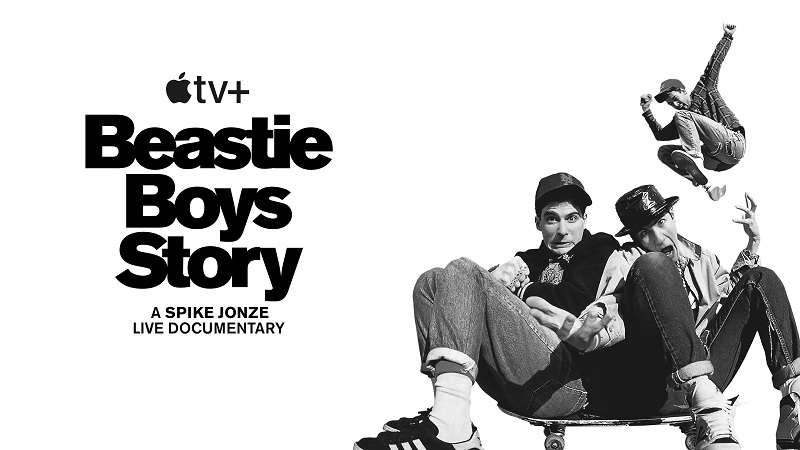
One can imagine the anticipation I had diving into Beastie Boys Story, the Apple-TV “live” documentary directed by longtime Beastie collaborator, Spike Jonze. Surviving members Adam Horovitz and Mike Diamond, aka Ad Rock and Mike D, pace the stage and refer to videos and photos on an enormous screen behind them that spans the group’s storied career. They even are able to visually date back to their early teens, skipping school on the gritty streets of New York City. Sadly, Adam ‘MCA’ Yauch passed away from cancer in 2012. That aspect is handled with grace and contagious tears as the group ceased to exist as soon as their partner for four decades had gone to the great beyond. It’s nice to see Horovitz and Diamond share stories that led up to that moment that clearly still haunts the longtime friends.
There are countless takeaways from the documentary. When it comes to their origins, one is often reminded about how success often combines the concepts of fate, luck, perseverance and good old fashion talent. These guys were malleable musically. They speak to being inspired by punk bands and particularly The Clash. Witnessing some of their first performances, it is clear that their passion for what is coming through their veins and into the world is palpable. Yet, when Run DMC started providing the beat to those Manhattan roads, the trio sought to become like their idols in every single conceivable manner.
Love the first footage of the guys rapping, complete with lyrics on handwritten paper firmly in hand! One aspect that makes Beastie Boys Story so compelling, and something die hard fans will have no problem watching more than once, is how unabashedly charming, informative, approachable and cognizant of their place in the lexicon of pop culture Horovitz and Diamond are. Their uncanny ability to draw the listener/viewer in is profoundly affecting. It should surprise no one who has listened to their lyrics over the years, but these guys know how to tell a story and weave an entertaining web in the process. The Beastie Boys have always possessed a simultaneous ease and effortless chemistry that permeates their recordings, live shows, red carpets and especially when their guard is down—such as chronicled in the doc through their tough times. This doc doesn’t shy away from the darker side of their experience, including their immense regret at how they handled longtime friend and musical collaborator, Kate Schellenbach. This hits particularly powerfully after the enormous success of License to Ill where the guys basically say they do not like who they became. That’s some heady realization for some perceived to be frat-boy drunk version of Run DMC.
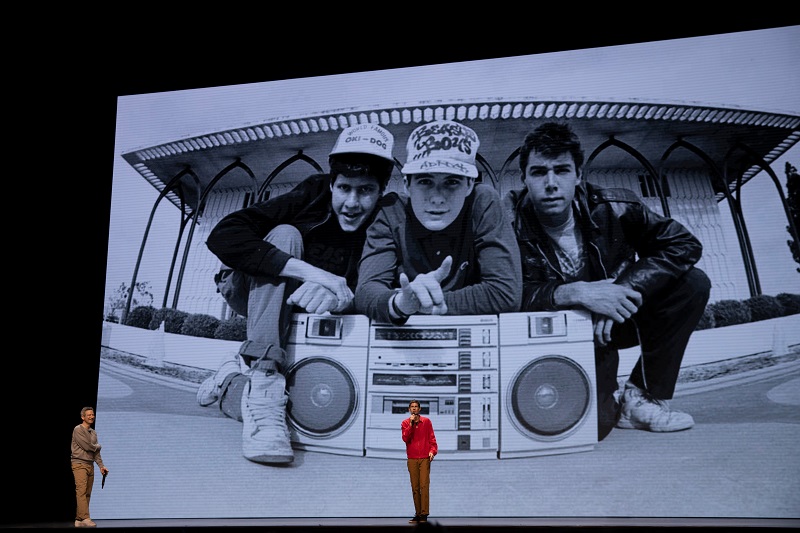
If one looks at their musical catalogue, there are gaps between albums and getting a front row seat to what was going on behind-the-music is wickedly enlightening to casual fans and delves deeply into the ins and outs of what made the rap/punk/pioneering musical mastery tick. For example, between License to Ill (which was the highest selling debut album in history at that point) and Paul’s Boutique, there was three years. Turns out, MCA had quit the band, which was news to the other two! It was fascinating to get their take on the Rick Rubin and Def Jam/Russell Simmons fallout and how the success of that first record and the toll of constant touring played in the multi-year absence between first and second albums. As anyone who has covered popular music can tell you, that sophomore effort has historically been a challenge and learning that these guys went months without speaking to one another between 1986 and 1989 is somewhat shocking.
When they finally did get together, it was pure musical magic.
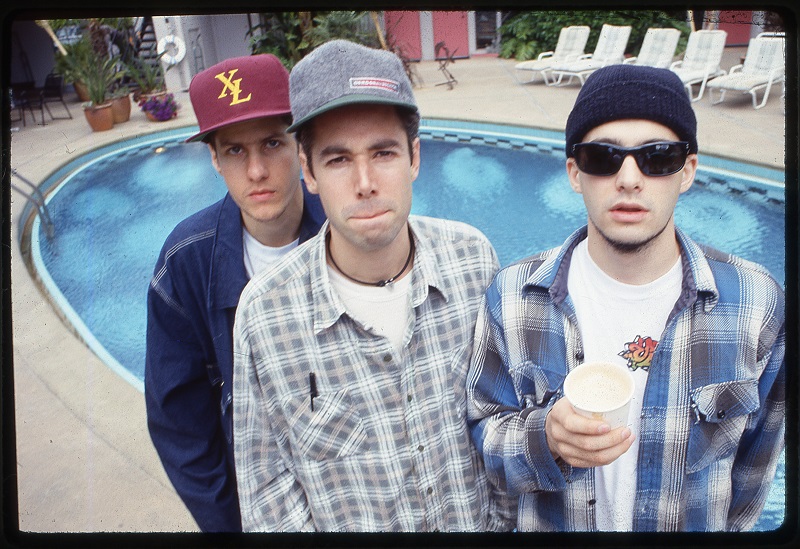
I never realized that Paul’s Boutique was a flop upon its release. My friends and I played that CD so much, it made License to Ill seem like we ignored it. It was an instant classic and we knew it. The sophomore slump didn’t hit the Boys’ creatively, just commercially. After the Def Jam fallout, the signing of a new deal with Capital, it was a blissful gift to see and hear the band’s reaction to something so personal being almost universally met with audience and critical silence. It was a revolutionary record that relied heavily on samples in a way that pushed the envelope. Heck it blew open the envelope and created a whole new level of sonic succulence. Getting the guys’ take on making that record in particular and the subsequent crickets is one of the absolute highlights of Jonze’s doc.
As the group morphed and returned to playing their own instruments, it’s fascinating to see how organically that occurred to these accidental hip hop stars. Also, when I think Beastie Boys, I always think New York City. Another caveat of Story is how the group lived in Los Angeles for over eight years.
The doc, essentially, follows the groups’ output timeline, interspersed with personal anecdotes that bring not only the music alive, but also the wider cultural zeitgeist at that particular moment in time. Interaction with Jonze is minimal, but it’s nice to enjoy a documentary where it is coming together as we watch it. The filmmaker who gave us Being John Malkovich and She has an unspoken rhythm with the band, and it was certainly present on their music video collaborations but comes through so full of love and life in Beastie Boys Story.
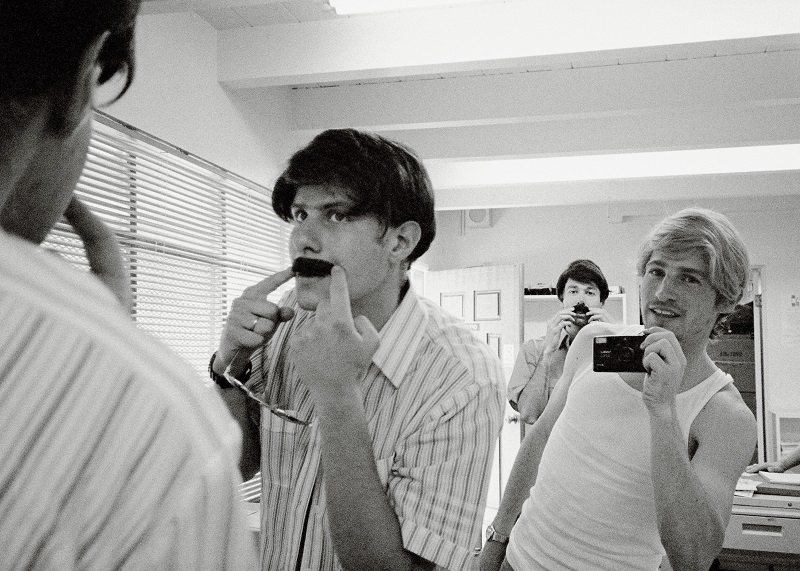
Missing the musical expressive force that is Yauch is one thing. What Beastie Boys Story informs so graciously is the socially conscious aspect that he brought to the titanic trio. His exploration of Buddhism and working with the Dalai Lama absolutely had an influence on him personally, and that bled into the group as well. It is nothing but love and admiration directed at the late creative genius and his visual impact, beyond musical, to the group is another strong takeaway from the doc. Nathanial Hörnblowér gets his due! Adam’s loss is immense. This is an artist who is sorely missed. That is the depressing element that one cannot shake about this Story. It’s not that it doesn’t have a happy ending, it’s just that these guys will never create again as The Beastie Boys and after getting a first hand account of their creative mastery over 40 years … that’s a seismic hole of creativity that will never again rear its head.
Grade: A

